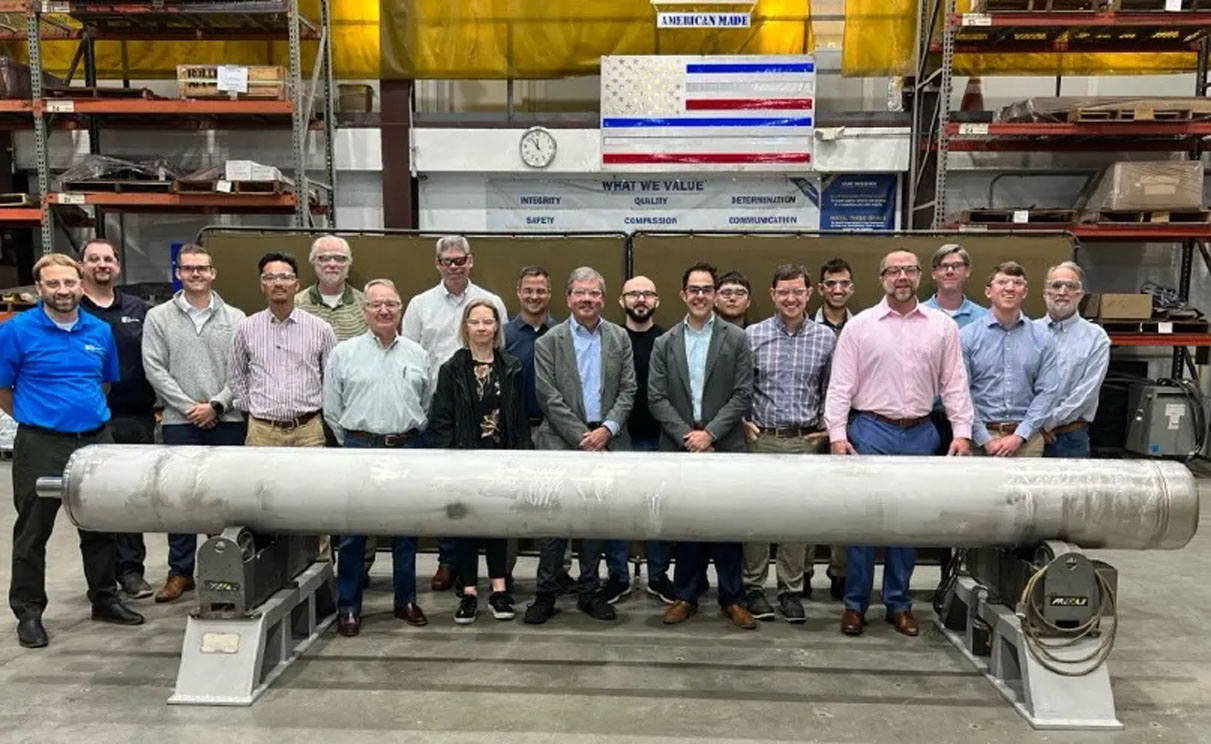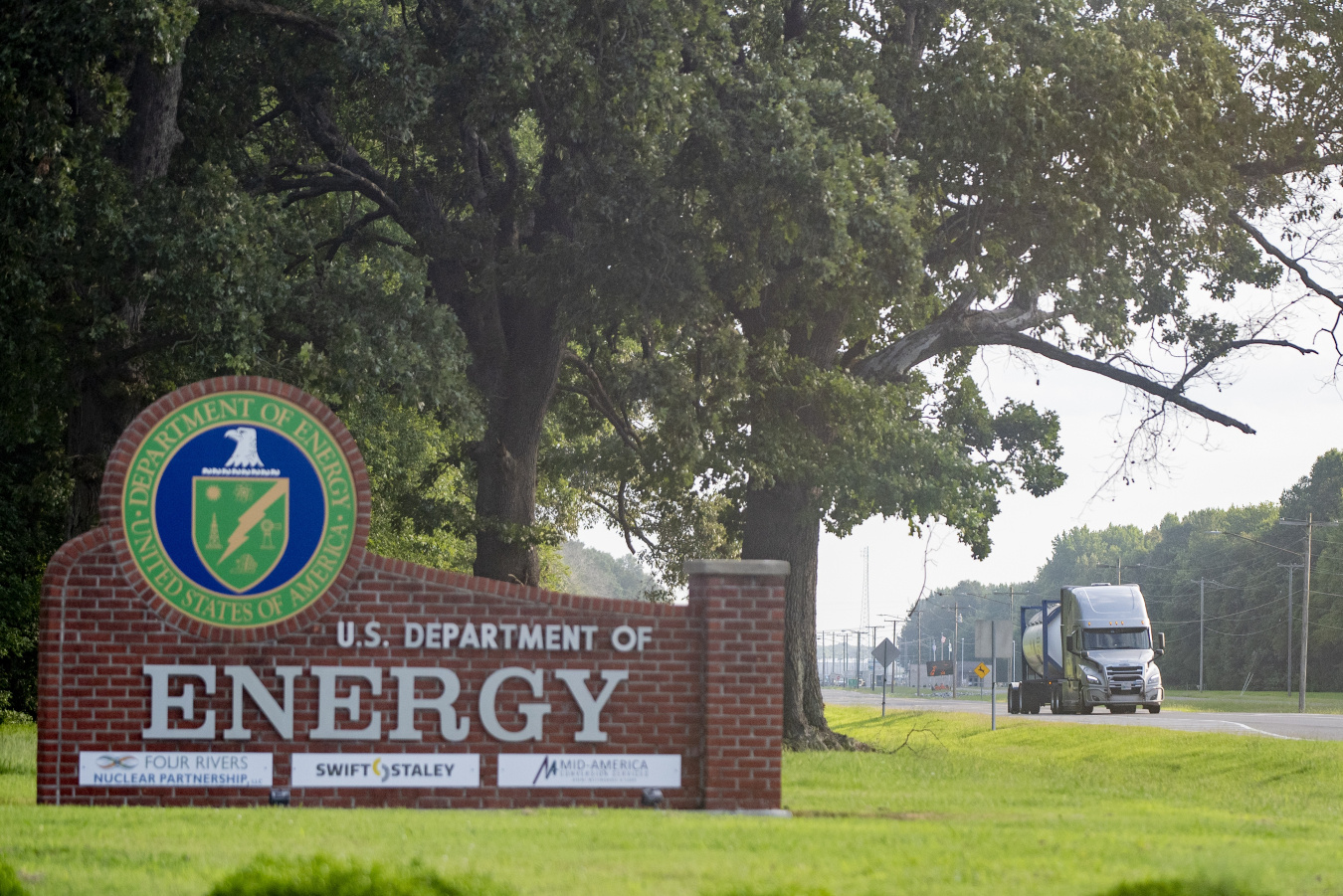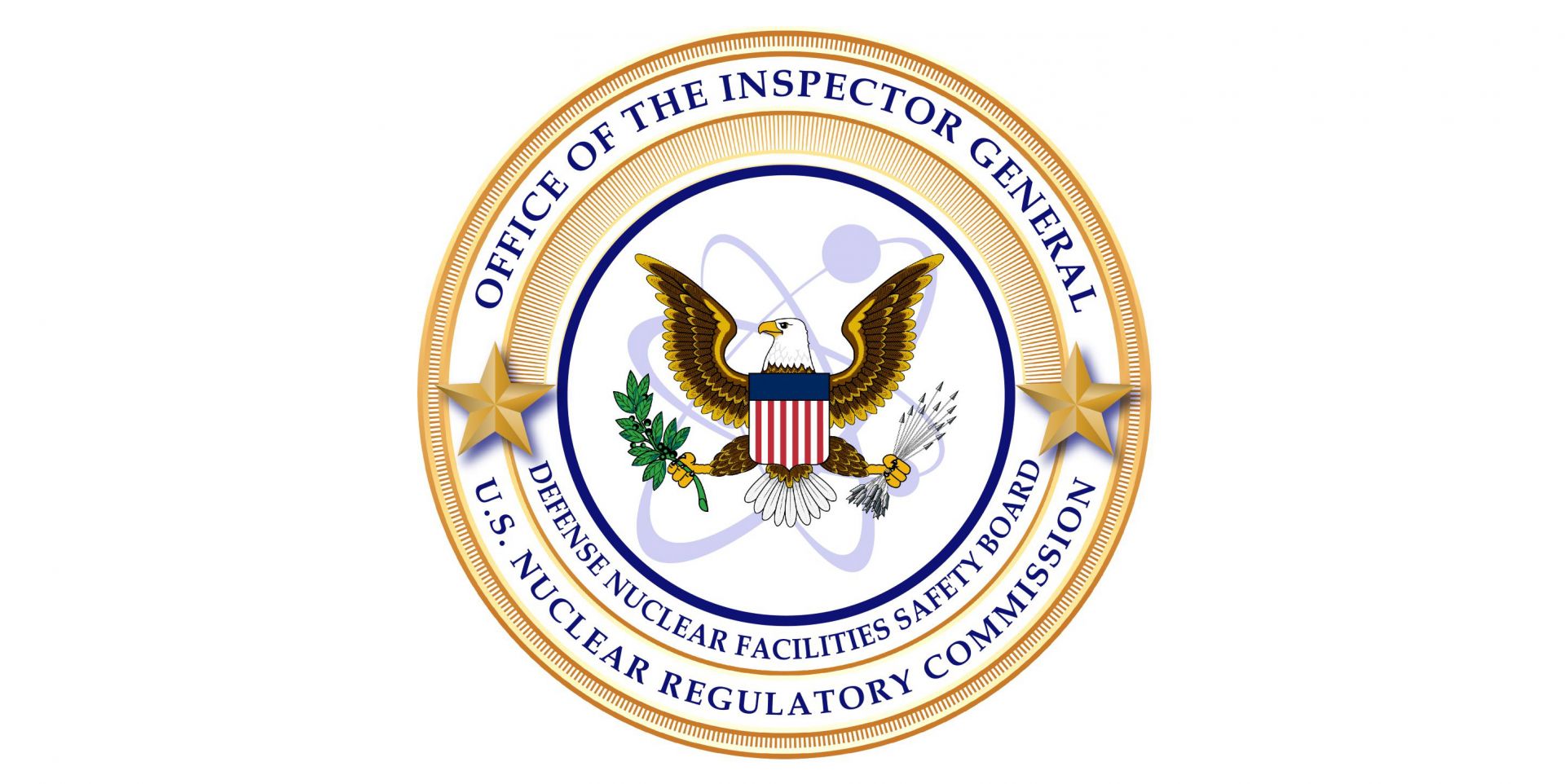A WTP crew vitrified the first Hanford Site tank waste inside one of two melters in the Low-Activity Waste Facility. Top right, a camera inside the melter’s pour cave shows the vitrified waste being poured into a stainless steel container as well as the hot liquid inside the container. Bottom right, the first two containers filled with vitrified waste in the pour cave prior to being lidded, swabbed to verify their exteriors are free of contamination, and then moved into the export bay. (Photos: DOE)
The Department of Energy has announced that the Hanford Site’s Waste Treatment and Immobilization Plant (WTP) has reached a commissioning milestone, producing more than 20 stainless steel containers of immobilized low-activity radioactive waste.
Diagram of the Cigéo repository in France. (Image: Andra)
France’s Nuclear Safety and Radiation Protection Authority (ASNR) completed its technical review and issued a satisfactory opinion on Andra’s license application to construct the Cigéo deep geological disposal facility. Andra is the French national agency responsible for the safe management of all radioactive waste in the country.
A 3D-printed tool (left) that retrieves samples from radioactive waste tanks at the Savannah River Site. Also pictured are 3D-printed crawler transport baskets used during the job. (Photo: DOE)
A 3D-printed tool has been developed at the Department of Energy’s Savannah River Site in South Carolina that can eliminate months from the job of radioactive tank waste sampling.
Members of the UPWARDS technical advisory committee stand in front of a prototype universal canister system in 2024. (Photo: Deep Isolation)
Nuclear waste disposal technology company Deep Isolation Nuclear has announced the completion of a three-year project to manufacture, physically test, and validate a disposal-ready universal canister system (UCS) for spent nuclear fuel and high-level radioactive waste from advanced reactors.
The Paducah Site in Kentucky. (Photo: DOE)
The Department of Energy’s Portsmouth Paducah Project Office is weighing options on reprocessing approximately 9,700 tons of contaminated nickel being stored at the former Paducah Gaseous Diffusion Plant in Kentucky.
The St. Lucie ISFSI with Holtec’s HI-STORM casks installed in the foreground. (Photo: Holtec)
Holtec International has completed a spent nuclear fuel dry storage campaign at NextEra Energy’s St. Lucie nuclear power plant in record time, according to the company. Twelve of Holtec's HI-STORM FW cask systems were loaded to the plant’s independent spent fuel storage installation (ISFSI) in little over one month. In total, 144 spent fuel assemblies were moved from St. Lucie’s used fuel pools to the ISFSI pad.
SDU 10, the fifth megavolume Saltstone Disposal Unit at SRS, is the target of an upcoming leak-tightness test. (Photo DOE)
The Savannah River Site in South Carolina will begin a leak-tightness test to qualify the megavolume Saltstone Disposal Unit (SDU) 10 to store up to 33 million gallons of solidified, decontaminated salt solution produced at the site.
From left, Gerald Nieder-Westermann, IAEA waste disposal specialist; Andrea Pigorini, ITA president; Karina Lange, IAEA waste disposal specialist and scientific secretary for the IAEA’s Underground Research Facilities Network, Daniel Garbutt, ITA representative; Helen Roth, ITA executive director; Arnold Dix, ITA past president and chair of the ITA special interest group; and Stefan Joerg Mayer, IAEA team lead. (Photo: ITA)
The International Tunnelling and Underground Space Association (ITA), a nongovernmental organization made up of 81 member states working to advance the safe, beneficial use of subsurface spaces, is working with the International Atomic Energy Agency to support the advancement of geologic disposal facilities for high-level radioactive waste.
Hanford’s WTP crew celebrate the first vitrification of radioactive waste in the plant’s Low-Activity Waste Facility. (Photo: Bechtel)
The Department of Energy’s Office of Environmental Management and its contractor Bechtel announced on October 15 the start of nuclear vitrification operations at the Waste Treatment and Immobilization Plant (WTP), also known as the Vit Plant, at the Hanford Site in Washington state.
Letter to DOE includes recommendations on new and existing regulations for storage, recycling, and disposal of used nuclear fuel.
WASHINGTON, D.C. — The American Nuclear Society (ANS) sent a letter to U.S. Secretary of Energy Chris Wright and the U.S. Department of Energy (DOE) in response to Executive Order 14302, “Reinvigorating the Nuclear Industrial Base.” The letter outlines expert-backed recommendations for establishing an effective national program within the United States to manage the storage, reprocessing, and final disposal of commercial used nuclear fuel once it has been in a reactor from a nuclear power plant. This stage is commonly referred to as the “back end” of the nuclear fuel cycle.
The location of Holtec’s proposed HI-STORE facility. (Image: Holtec)
Holtec International has confirmed it is canceling plans to build a consolidated interim storage facility for spent nuclear fuel in southeastern New Mexico. Named the HI-STORE CISF, the facility would have stored up to 10,000 canisters of commercial SNF on land owned by the Eddy-Lea Energy Alliance (ELEA) near the towns of Carlsbad and Hobbs.
A prototype nuclear waste canister in the drillhole receptacle. (Photo: Deep Isolation)
Nuclear waste disposal technology company Deep Isolation Nuclear announced it has signed a technology licensing agreement with government contractor Navarro Research and Engineering, giving Navarro access to Deep Isolation’s portfolio of intellectual property for use in nuclear and hazardous waste management applications across the states of Tennessee and Idaho.
WM Symposia’s Greg Meyer (left) with Mikhail Chudakov from the IAEA. (Photo: WM Symposia)
WM Symposia, which hosts the annual Waste Management Conference in Phoenix, Ariz., announced it has signed a practical arrangement with the International Atomic Energy Agency aimed at strengthening international collaboration in the safe management of radioactive waste, decommissioning, and environmental remediation.













 The OECD Nuclear Energy Agency has issued a report calling for more-detailed information on tracking the decay heat of spent nuclear fuel from light water reactors. According to the NEA, the report highlights the increasing importance of accurate decay heat estimations due to evolving fuel characteristics, including higher initial fuel enrichment, increased burn-up rates, and extended reactor cycle lengths.
The OECD Nuclear Energy Agency has issued a report calling for more-detailed information on tracking the decay heat of spent nuclear fuel from light water reactors. According to the NEA, the report highlights the increasing importance of accurate decay heat estimations due to evolving fuel characteristics, including higher initial fuel enrichment, increased burn-up rates, and extended reactor cycle lengths.
